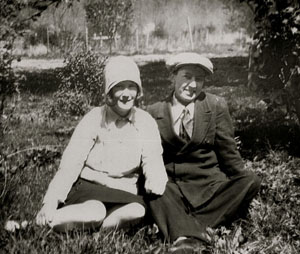 The old couple stepped onto the train tentatively.
The old couple stepped onto the train tentatively.
Frail and unsure, they inched their way onto the people mover at the Atlanta airport that would take them to Terminal A. They made it on just as the androgynous computer voice warned, “The doors are closing….. Stop…… Do not enter.”
The passengers scooted back, adjusting their carry-on luggage to make room for the late arrivals.
Moments before, a mother cradling a newborn baby had boarded the train with her sister, who was pushing a toddler in a stroller.
Standing in the middle of the train car, out of reach of the vertical poles, the older man motioned for his wife to hold onto one of the straps hanging from the ceiling for balance.
Just as she reached up for a strap that was high above her — too high — the next digitized voice announcement came on:
“This train is departing….Please hold on.”
In a flash, it was clear what was about to happen.
The Hartsfield-Jackson Atlanta International Airport, besides having a name that is three words too long, is the world’s busiest airport. At 90 million passengers annually, that’s about 250,000 travelers each day.
A system of multi-car people movers is used to transport this mass of humanity efficiently through the airport’s six concourses. In service for 30 years, the train recently was the subject of an official naming contest.
Airport authorities wanted to differentiate it from the two other trains operating at the airport — the new ATL SkyTrain, which connects the terminal to the rental car center, and the MARTA train station, which connects to the citywide transit system.
So what was the winning entry that netted the train-namer a $100 American Express gift card?
The “Plane Train.” Kind of a plain name.
I would have preferred the submission from a fan of “The Colbert Report,” the Comedy Central news program, who proposed the train be dubbed COLBERT – Carrier of Lovely Beautiful Excited Ready Travelers.
But there was nothing plain about the scene I witnessed on the Plane Train this morning.
As if choreographed, the train accelerated abruptly at the precise moment the old woman reached up for the elusive ceiling strap. In slow motion, she lost her balance and fell back against her husband who was also without any support.
He fell backward onto the stroller of the toddler who was terrified by the sense of his world crashing in on him.
Faster than I could see it happen, hands reached out from every direction. Arms supported the old man and kept him from falling further onto the shrieking toddler.
The man and his wife hung suspended above the floor, in a net of arms of all colors.
As my eyes followed that human chain of arms back to the source of its stability, I saw one man who was making all this possible.
 He was holding onto a vertical pole with his left hand, and with his right he had reached out and made a firm connection, anchoring the entire chain of supporters.
He was holding onto a vertical pole with his left hand, and with his right he had reached out and made a firm connection, anchoring the entire chain of supporters.
This time, it was his calm, human voice, reassuringly announcing, “It’s okay. I have you.”
For reasons I don’t fully understand, my eyes are welling up again as I type this on the plane home – touched deeply as I have been each time my mind has gone back to that moment.
I guess it is the power of being profoundly reminded once again of two simple truths:
In the blink of an eye, things fall apart.
But just as quickly, people extend a hand to people in need.
This train has departed. Someone will need your steadying hand. Please hold on.




